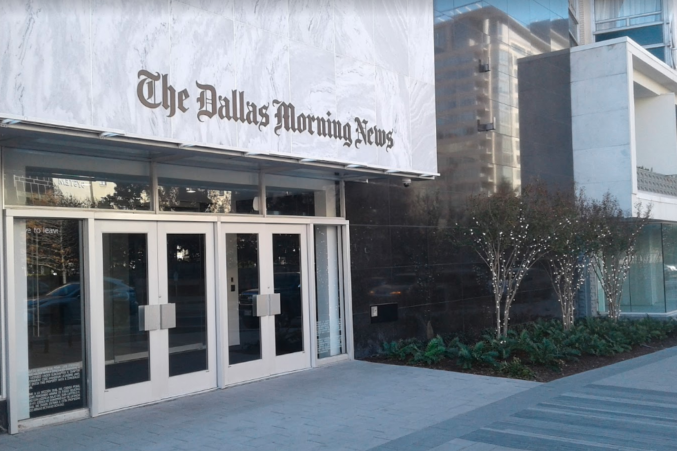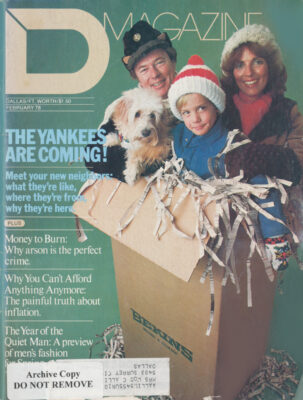At a recent cocktail party, I found myself backed against a trash compactor by an ebullient fellow who hadn’t been to the movies since The Sound of Music but had already seen Close Encounters five times.
“Wouldn’t you like to change places with that guy in the film?” he asked excitedly. “Just hop aboard one of those UFO’s and go spinning around for a while. Couple of months maybe.”
I expressed interest in seeing San Francisco and Guadalajara but none whatsoever in space travel. “Even the Concorde leaves me cold,” I added.
“You’re not curious about other galaxies and solar systems?” he persisted. “Just a little bit?”
I shook my head.
“That’s very odd, you know,” he muttered and drifted off towards the Wild Turkey.
Now Close Encounters is certainly for kids (six and over, at any rate) but it’s also for anyone looking for some of the magic and mystery traditionally found in myths and fairy tales. Nothing wrong with this, of course, except that a lot of people, including critics, have gone overboard in proclaiming the film a profound religious experience, a message of hope for a cynical and despairing age. This is mistaking Peter Pan for Piers Plowman. Close Encounters is science-fiction fantasy pure and simple and no more profound than its luminous forerunner Star Wars, which left us with that catchy but utterly useless moral, “Trust the force.” Steven Spielberg (Jaws) is a marvelously gifted cinematic wizard who knows how to play off the conventions of a genre to create stunning new effects. His aliens are not the hostile invaders we’re accustomed to but, as best we can tell, benevolent teachers dedicated to some form of galactic consciousness-raising. Their objective is peace and to achieve it they recruit a handful of dreamers like Roy Neary (Richard Dreyfuss) and his neighbor (Melinda Dillon) who are willing to follow a vision all the way from Muncie to the wilds of Wyoming. It’s never clear what they think they’re looking for. but for being so dogged they’re rewarded with a sound and light show of unparalleled brilliance – dozens of glowing, humming discs, a haunting musical dialogue involving oboes and tubas, and a glimpse of some translucent, egg-headed creatures who look like clones of the Pillsbury Doughboy.
At this point, science fiction and fantasy come joyously together. Every once in a while a fellow named Lacombe (Francois Truffaut) makes some weighty pronouncement about the scientific significance of the whole business, but there’s no reason to take him any more seriously than we took Richard Carlson or Dana Andrews twenty years ago. The issue isn’t whether UFO’s are real or not, a subject I never brought up with my friend at the party, but what new imaginative landscapes they can carry us to.
This isn’t a notion that will please all the true believers, but it delights me. I go to science-fiction films exclusively for the special effects and always feel cheated by directors who want to instruct instead of entertain me. The somber moralizing of Kubrick’s 2001 was a bore, whereas Star Wars was a delight from beginning to end because we were never allowed to withdraw from the world of R2-D2 and the Wookies. If Close Encounters has a weakness, it’s spending too much time on earth, or rather on earthly concerns. Before the climactic rendezvous, we have to sit through a lot of familiar stuff involving doltish bureaucrats and skeptical neighbors. We watch poor Roy lose job, wife, and nearly his mund before his vision is confirmed. There are a few witty moments, like the shots of secret tracking equipment being transported in Piggly Wiggly trucks, but most of the preliminaries look like so much window dressing. Spielberg obviously doesn’t care that much about his characters. He wants to play with the space ships; when he does, the entire film lifts out of the ordinary.
Like Gene Wilder’s previous films, The World’s Greatest Lover is a funny idea in search of a story. You can practically hear the script conferences. “Suppose a studio decides to sponsor a Valentino look-alike contest and some schlemiel, a baker from Minneapolis, let’s say. gets it into his head that he’s going to win it.” “Ya,” someone else shouts. “We bring him to the coast with his wife, a real Valentino freak, and involve the two of them in all sorts of humiliating situations. Sexual, cultural…” Not a bad beginning. What’s missing is any sort of structure to keep this promising mess together for ninety minutes.
Narrative is not one of Wilder’s strengths as a director, as anyone who saw The Adventures of Sherlock Holmes’ Smarter Brother already knows. The original mystery, something to do with Queen Victoria and state secrets, was forgotten after 20 minutes, leaving only a spoof without a target. Furthermore, the contest between Sherlock and his insanely jealous younger brother, Sigi, never got beyond the temper tantrum stage. What might have been a marvelously funny film about sibling rivalry turned into a careless pastiche of sight gags and song and dance routines. This might be attributed to an overdose of Mel Brooks, or else to Wilder’s taking on too much his first time out. As an actor, he had been free to indulge his anarchic streak, but as a director he had to resist the impulse to use every nutty idea that came to mind. The tension was never resolved and the film missed badly.
This fractured style works somewhat better in The World’s Greatest Lover, which has the rhythm of a silent comedy, but there simply aren’t enough inspired moments to make it a satisfying film. The parodies of famous scenes from Valentino’s films are tired and predictable, warmed-over Three Stooges rather than fresh Gene Wilder. The same is true of most of the scenes involving studio mogul Dom DeLuise, who seems to be turning into a third-rate Zero Mostel. The film’s funniest scene takes place in a recording booth, where Rudi Valentine (Wilder) has gone to practice his love-making technique with a dressmaker’s dummy. As he starts making his advances, a director’s voice booming in his ears, the crowd outside the booth grows larger until finally, bug-eyed and half naked, Rudi is forced to retreat through a rear door.
Not only is it a funny scene, it allows us a glimpse of Wilder’s true comic persona. With his gentle. Harry Langdonish face and shy, somewhat childlike disposition, he has some of the qualities one associates with the genuine romantic clown. He is also gritty and stubborn, capable of acting gracefully under pressure. Unlike the great film comedians – Chaplin, Keaton, Lloyd – he has yet to make a whole film about that character. It’s as though he doesn’t fully understand it. or is afraid to trust it. He is constantly covering it up with mugging and tics, so that we are more likely to remember his bits of business than him. This was true to some extent of the early Woody Allen, and surely one of the delights of Annie Hall is seeing all the pieces come together at last. The character and the material mesh perfectly. Ironically. Wilder’s finest performance was as the sheep lover in Allen’s Everything You Always Wanted to Know About Sex. It’s not a role to repeat, of course, but it did convey the kind of dreamy innocence that one would like to see more of in Wilder’s subsequent films.
Get our weekly recap
Brings new meaning to the phrase Sunday Funday. No spam, ever.
Related Articles

Media
5 Things to Know About ‘Why It Matters’ That Our Mayor Lies
Or: why does the Dallas Morning News treat readers like children?
By Tim Rogers

Home & Garden
This Must Be the Place—One Family’s Post-Pandemic Hyde Park–Inspired Home
After world events forced a Park Cities family to take shelter, they responded by putting together a team to create the ultimate post-pandemic Hyde Park-inspired gathering spot.
By Laura Kostelny

Golf
Byron Nelson Leadership Provides Details on New Sponsorship, Charitable Giving, More
With a new, 10-year title sponsorship deal in place with global holding firm CJ Group, Byron Nelson leaders are looking to build on charitable giving and continue to increase economic impact.


